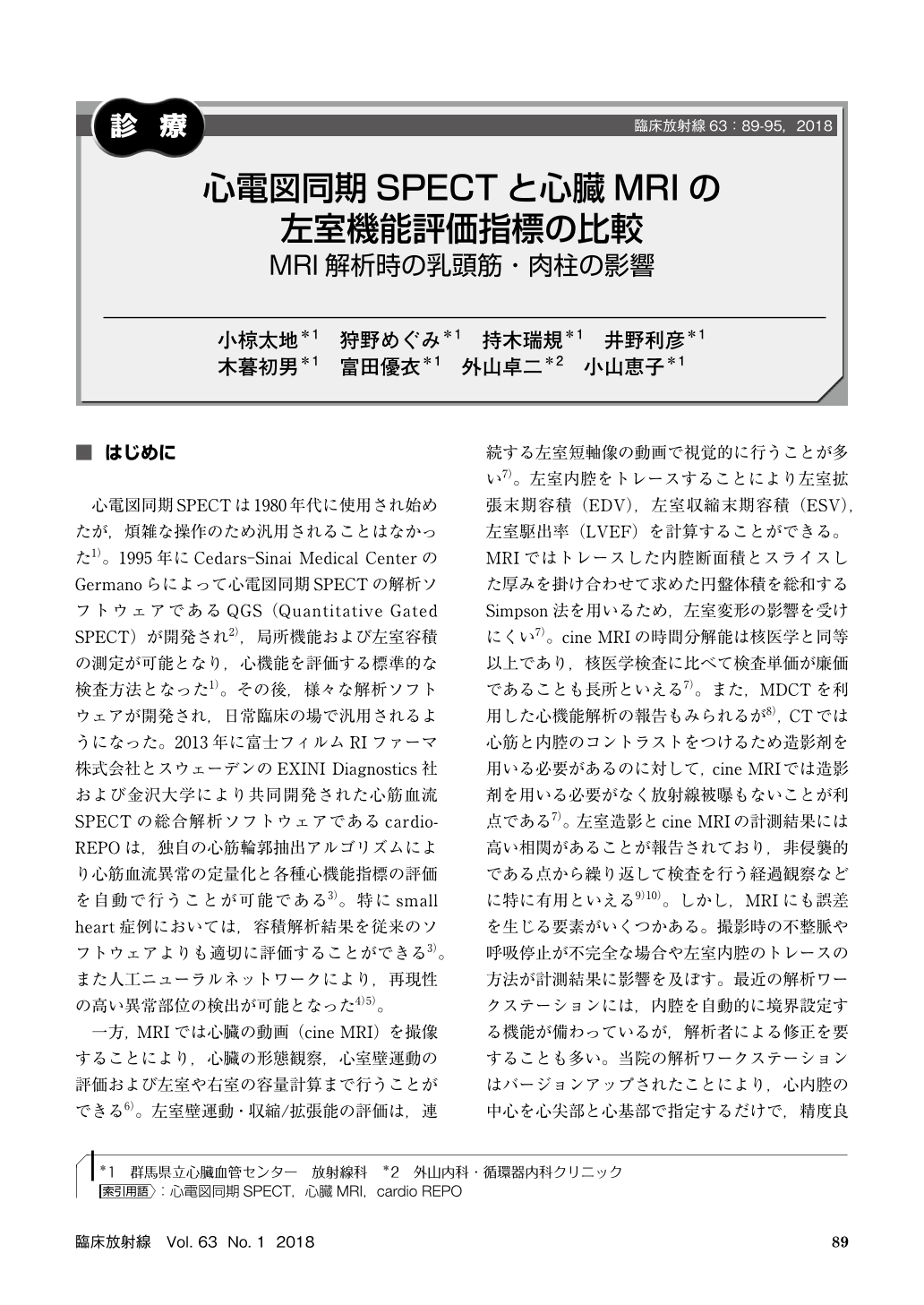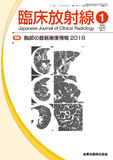Japanese
English
- 有料閲覧
- Abstract 文献概要
- 1ページ目 Look Inside
- 参考文献 Reference
心電図同期SPECTは1980年代に使用され始めたが,煩雑な操作のため汎用されることはなかった1)。1995年にCedars-Sinai Medical CenterのGermanoらによって心電図同期SPECTの解析ソフトウェアであるQGS(Quantitative Gated SPECT)が開発され2),局所機能および左室容積の測定が可能となり,心機能を評価する標準的な検査方法となった1)。その後,様々な解析ソフトウェアが開発され,日常臨床の場で汎用されるようになった。2013年に富士フィルムRIファーマ株式会社とスウェーデンのEXINI Diagnostics社および金沢大学により共同開発された心筋血流SPECTの総合解析ソフトウェアであるcardioREPOは,独自の心筋輪郭抽出アルゴリズムにより心筋血流異常の定量化と各種心機能指標の評価を自動で行うことが可能である3)。特にsmall heart症例においては,容積解析結果を従来のソフトウェアよりも適切に評価することができる3)。また人工ニューラルネットワークにより,再現性の高い異常部位の検出が可能となった4)5)。
Comparative evaluations of left ventricular function between single photon emission computed tomography(SPECT)and magnetic resonance imaging(MRI)have been reported. Although inclusion of papillary muscles and trabeculae carneae in the left ventricular cavity during MRI depends on the facility, few studies have examined their influence on the results. Cardio REPO and MRI were compared, and the characteristics of the analysis software and the influence of papillary muscles and trabeculae carneae on the results were examined. The results showed that the characteristics of the modality affected the results. Therefore, clinicians should evaluate after confirming the imaging findings. As the methodological difference affects the results, determination the evaluation criteria in each facility is important.

Copyright © 2018, KANEHARA SHUPPAN Co.LTD. All rights reserved.


